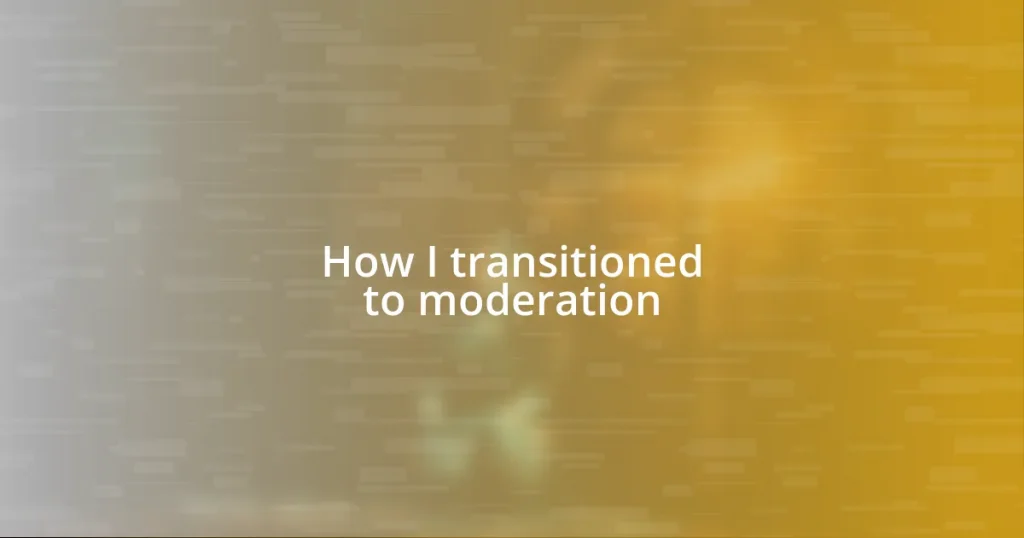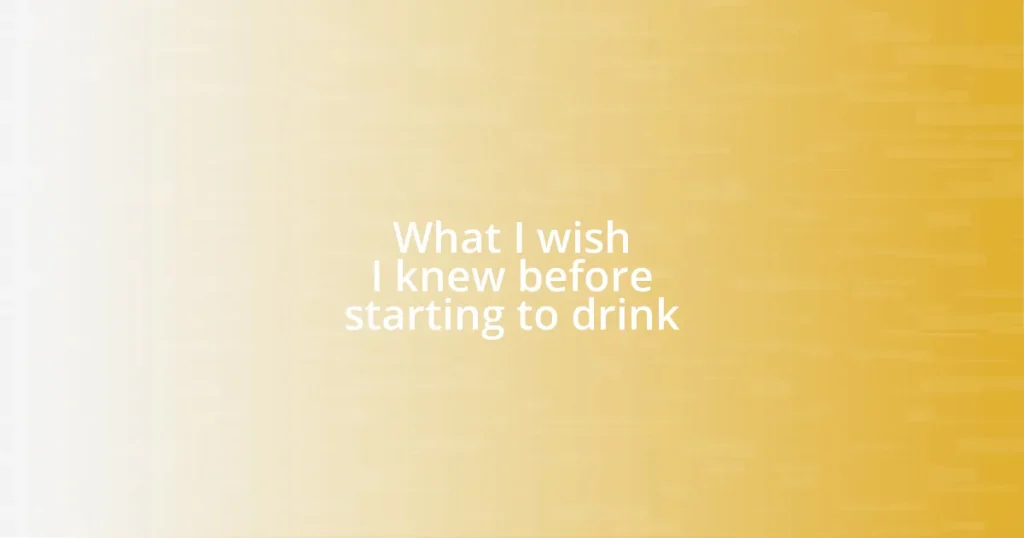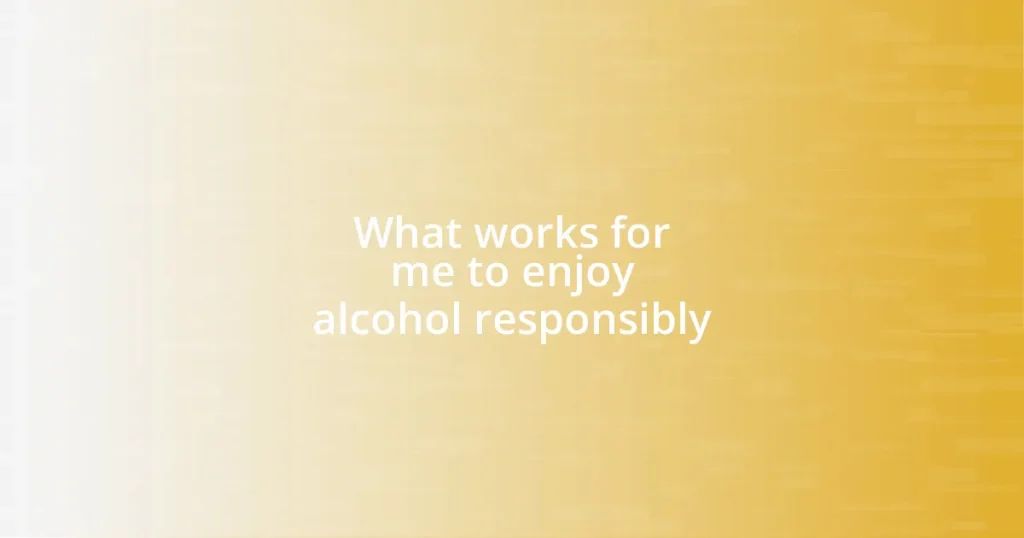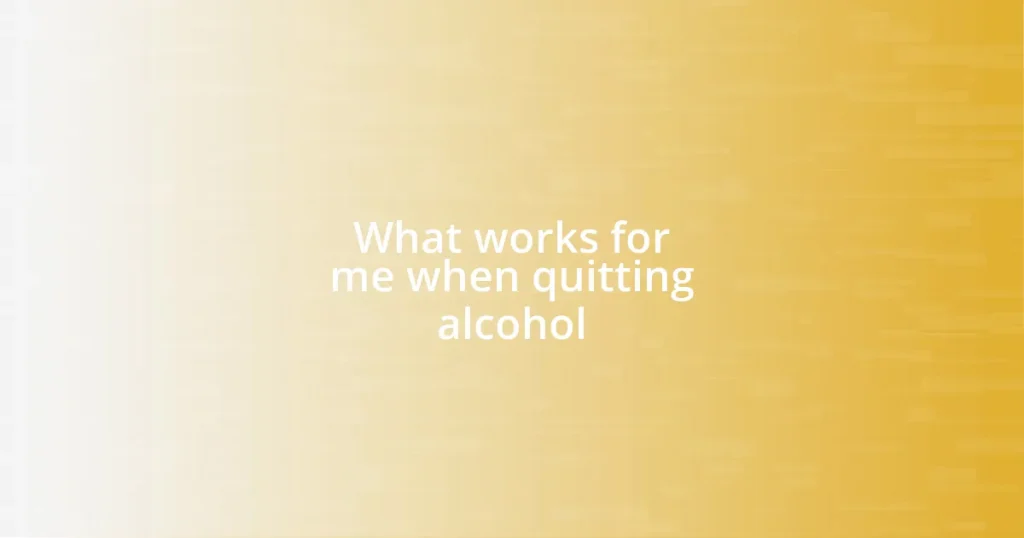Key takeaways:
- Moderation extends beyond rule enforcement; it involves fostering community and addressing emotional needs through empathy and active listening.
- Establishing clear community guidelines enhances transparency and builds trust, encouraging positive engagement among members.
- Utilizing tools like Discord for communication and analytics for understanding engagement trends significantly improves moderation effectiveness.
- Success as a moderator is measured through community engagement levels, member feedback, and the ability to resolve conflicts while maintaining a positive environment.
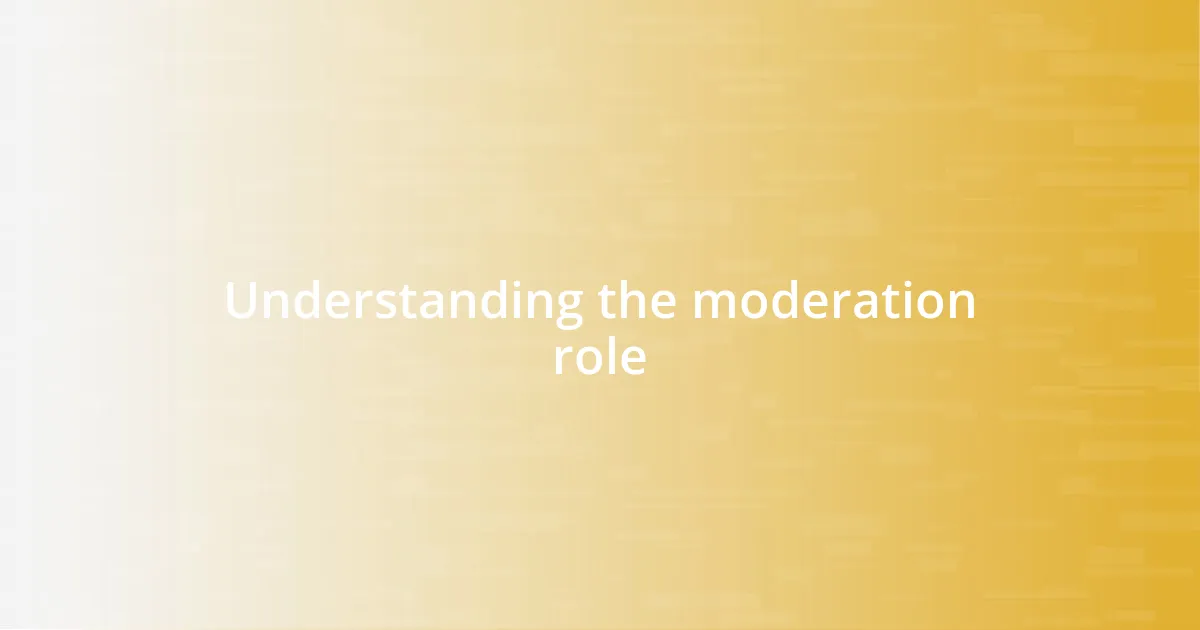
Understanding the moderation role
Understanding the moderation role requires more than just enforcing rules; it’s about fostering a sense of community. I remember my early days as a moderator. At first, I thought my job was strictly to oversee discussions, only to realize that my role was to be the bridge between members, encouraging open dialogue while managing conflicts. Have you ever felt caught between two friends who just can’t seem to get along? That’s what moderation often feels like.
Being a moderator is also about being empathetic. I learned quickly that behind every username, there are real people with real feelings. For instance, I once had to intervene in a heated conversation where someone felt personally attacked. It was in those moments that I understood the importance of showing compassion and providing a safe space for expression. How can we create an environment where everyone feels heard and respected? By practicing active listening and being approachable, I’ve seen how these small acts can change the dynamics of a community.
Ultimately, moderation demands a balance of authority and approachability. I often ask myself, “Am I being perceived as a gatekeeper, or as a supportive ally?” Finding that balance has been a journey of self-discovery. It’s shaped how I communicate, making me more mindful of my words and actions. Moderation is a daily commitment, blending vigilance with understanding—and each day offers new lessons in connecting with others.
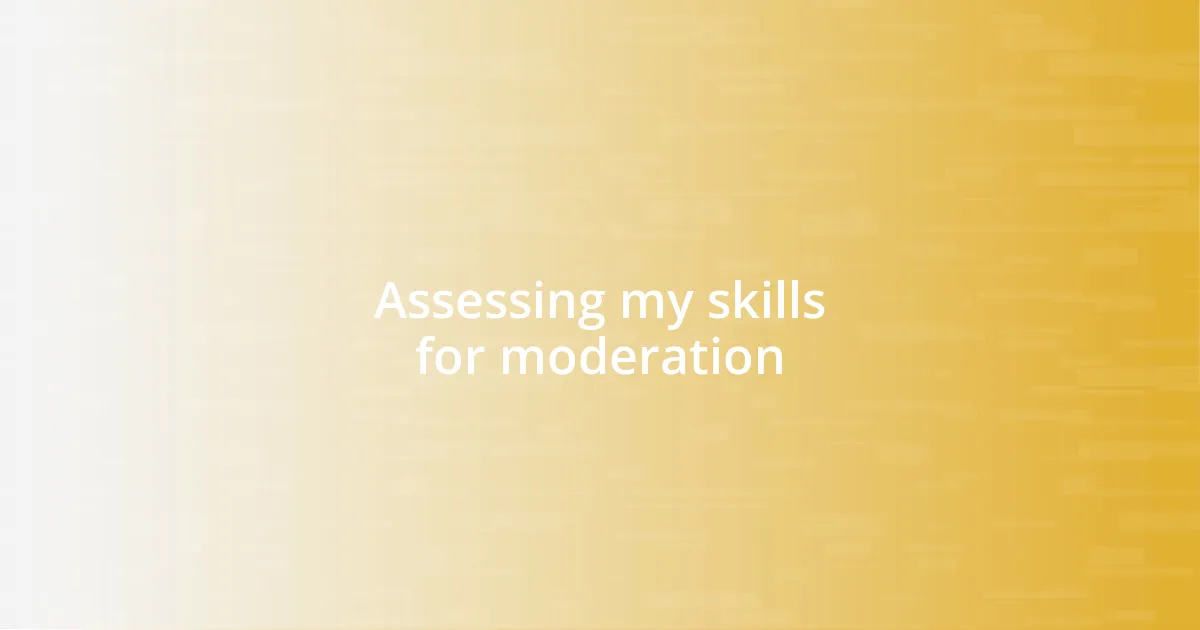
Assessing my skills for moderation
When I first considered becoming a moderator, I took a hard look at my existing skills. I realized that communication was my strongest asset, and it was essential for effective moderation. But beyond talking, I found that my ability to analyze situations objectively made a significant difference, allowing me to step back and view conflicts from multiple perspectives. This self-reflection was crucial; it opened my eyes to the strengths I didn’t even realize I had.
Here are the skills I assessed that were vital for my transition to moderation:
- Active Listening: Being truly present in conversations to understand the underlying concerns.
- Empathy: Recognizing and validating others’ feelings to foster connection.
- Conflict Resolution: Identifying solutions and facilitating calm discussions.
- Adaptability: Adjusting to the unique dynamics of the community and its members.
- Fairness: Ensuring that all voices have an equal opportunity to be heard without bias.
Understanding where I excelled—and where I needed growth—was pivotal in my journey. One instance stands out: during a particularly chaotic community event, I had to rely on my quick decisive nature while still nurturing the emotional needs of the participants. Balancing those elements not only tested my skills but also reinforced my commitment to the role.
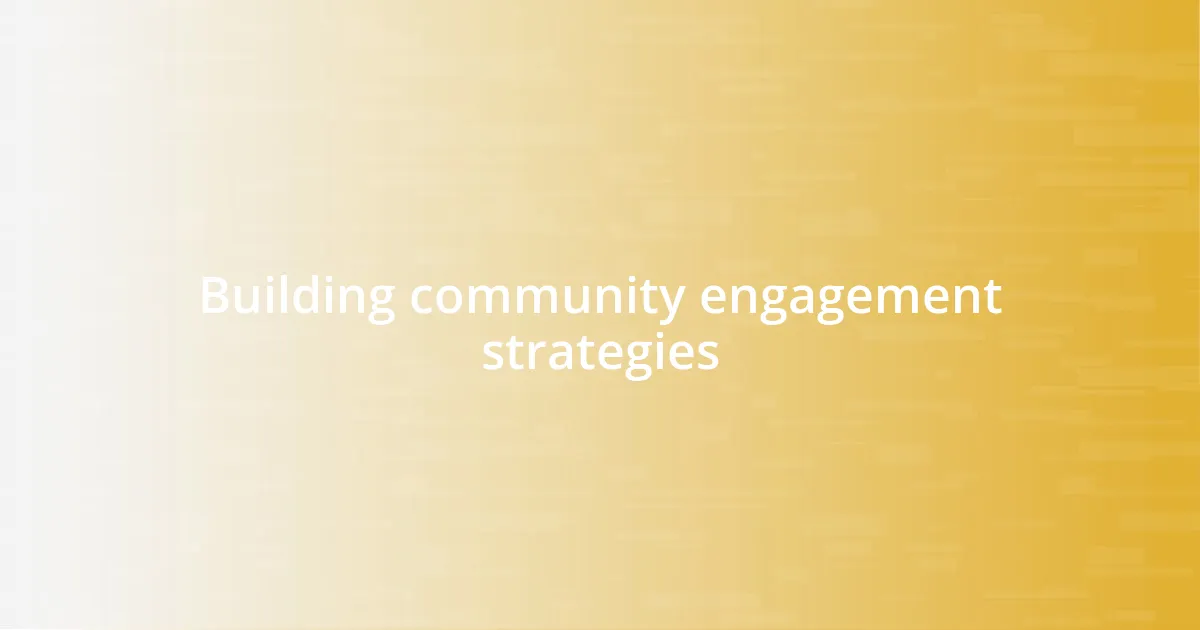
Building community engagement strategies
Building community engagement strategies can transform a group from a collection of individuals into a vibrant, interactive network. One technique I found particularly effective was hosting regular virtual meetups. I remember planning our first meeting, unsure of attendance. Yet, seeing that a dozen participants showed up to share their thoughts and experiences was heartening. It created a sense of belonging, and from that moment, I realized the power of bringing people together. Have you ever joined a group and felt instantly at home? That’s the magic of community engagement—cultivating connections.
Another essential strategy is to encourage user-generated content. Initially, I was hesitant to open the floor for members to share their ideas, fearing it might dilute the quality of discussions. However, after implementing a weekly topic idea exchange, I was amazed. Our community flourished as members proudly shared their perspectives. This not only enriched the conversation but also empowered participants. I often reflect on how collaborative contributions can elevate a community’s spirit. Has there been a time when you felt empowered to contribute? These moments are key to fostering deep engagement.
To sustain engagement, feedback loops are vital. I’ve learned that regularly soliciting feedback fosters trust and demonstrates value. After a particularly challenging week, I sent out a quick survey asking what members wanted more or less of. The honest responses helped me recalibrate our discussions, leading to renewed enthusiasm. I couldn’t help but smile when one member shared how much they appreciated being asked for their opinions. It reminded me that at the heart of engagement lies the simple act of listening.
| Engagement Strategy | Description |
|---|---|
| Virtual Meetups | Regular gatherings to foster connection and discussion. |
| User-Generated Content | Encouraging members to share thoughts and ideas, enriching community discussions. |
| Feedback Loops | Soliciting regular feedback to enhance community experience and build trust. |
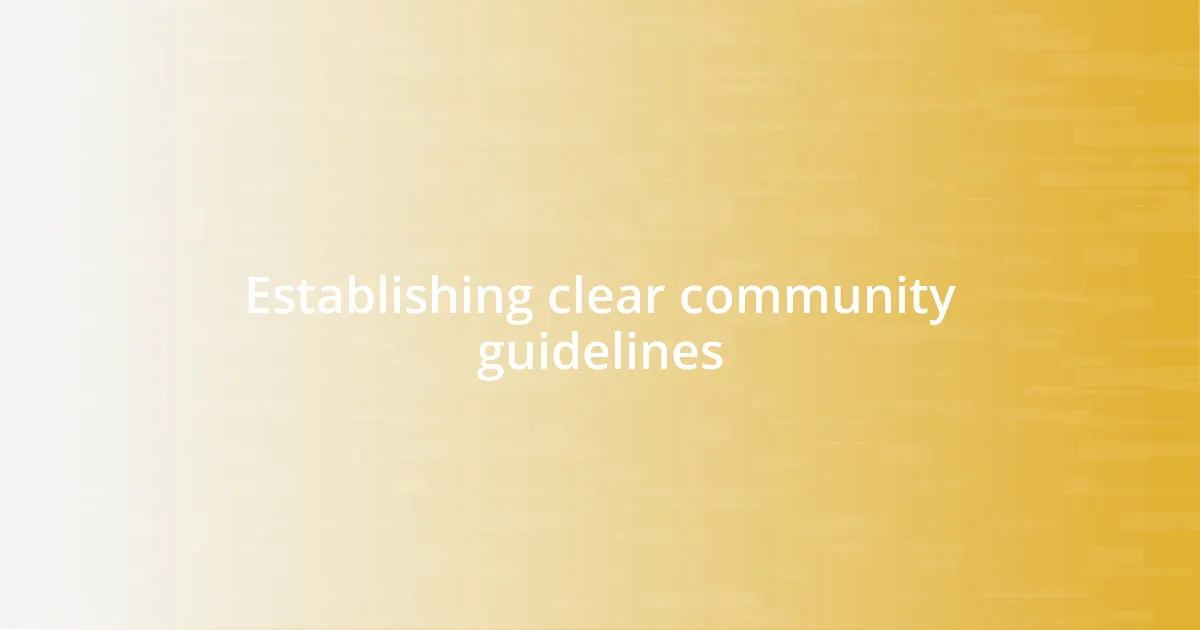
Establishing clear community guidelines
Establishing clear community guidelines was one of the first steps I took upon becoming a moderator. I found that having well-defined rules helps create a safe and respectful environment for everyone involved. For instance, I remember drafting our initial guidelines, which included expectations for respectful communication and clear consequences for violations. It felt empowering to lay down the foundations that would guide our community’s interactions. Have you ever felt a sense of reassurance knowing the rules?
As discussions unfolded, I realized that clarity is key. When I made the guidelines accessible and straightforward, I noticed community members began to engage more positively. It was a transformative moment when one member expressed gratitude for the clarity the guidelines provided, saying it made them feel more comfortable sharing their thoughts. This feedback reminded me that transparency builds trust—essential for any thriving community. How often do you consider the role of guidelines in fostering open communication?
Finally, revisiting and updating guidelines is essential to reflect the evolving needs of the community. I learned this lesson after a significant disagreement arose, pushing me to gather input on how our guidelines could evolve. Collaborating with members to revise our rules not only addressed pressing issues but also fostered a sense of ownership within the community. It made me ponder—when was the last time you saw a community thrive because its members felt heard and valued? Addressing concerns collaboratively can truly strengthen community ties.
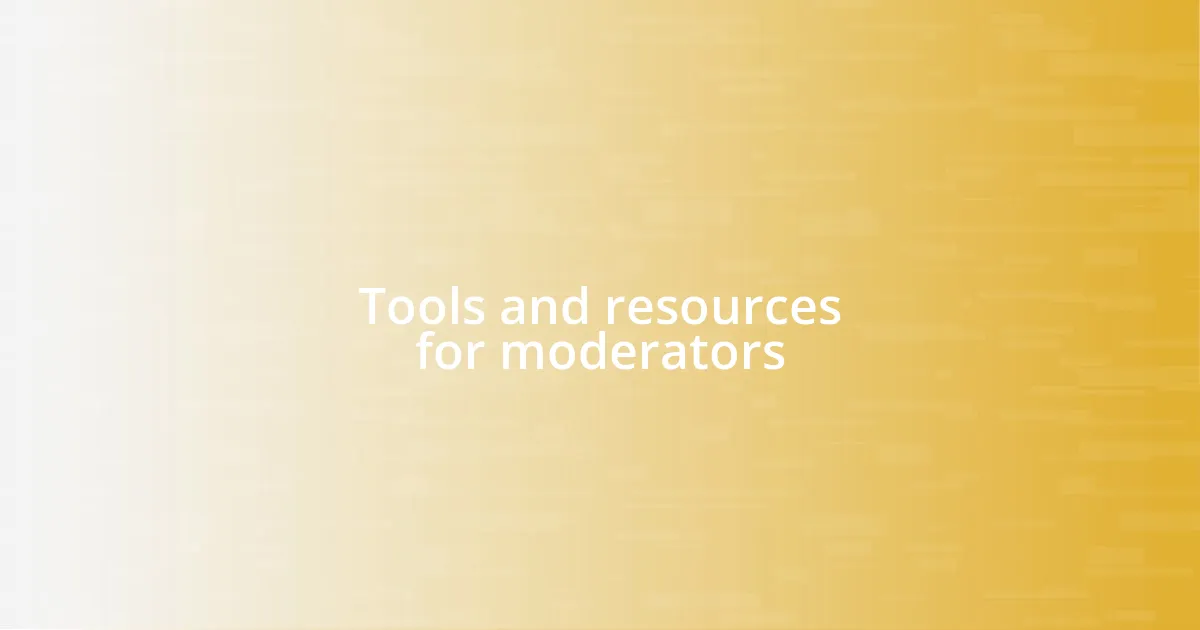
Tools and resources for moderators
Finding the right tools can make all the difference for moderators. I discovered platforms like Discord and Slack are incredibly effective for real-time communication and organization. When I first introduced Discord for our community, the transition felt daunting, but seeing members collaborate in dedicated channels was a game-changer. Have you ever felt the thrill of a lively discussion unfolding in real time? It’s exhilarating!
Another resource I leaned on was data analytics tools. Initially, I didn’t pay much attention to the numbers, but diving into member engagement stats opened my eyes. I remember some weeks where participation dipped, and by analyzing trends, I figured out which topics sparked interest. It’s fascinating how numbers can guide you to tailor discussions. Did you know that sometimes the quietest members have the most compelling insights? Adjusting my approach based on data has truly rejuvenated our interactions.
Lastly, I turned to content creation tools like Canva and Trello to enhance presentation and organization. I’ll never forget the first time I used Canva to design an eye-catching announcement for an event. The positive feedback from members made it clear that visuals matter. Have you experienced the impact of a well-designed post on community engagement? It’s remarkable how the right resources can elevate the experience for everyone involved.
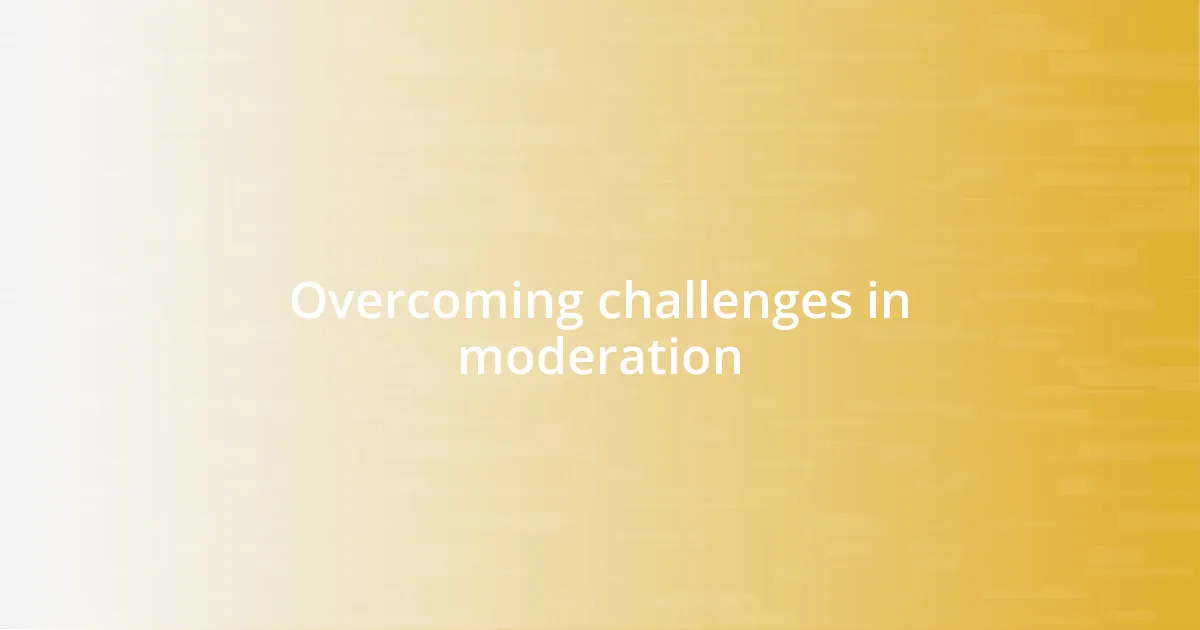
Overcoming challenges in moderation
During my journey in moderation, I faced various challenges that required resilience and adaptability. One instance that stands out involved dealing with a particularly heated debate among members. I remember sitting back and feeling a mix of anxiety and determination as I watched the conversation spiral, unsure of how to intervene. It was in that moment I realized that sometimes, stepping into the fray to calmly mediate is vital. Have you ever had to play peacemaker in a situation, even when it felt uncomfortable? I found that addressing issues directly, while remaining impartial, rejuvenated the dialogue and built respect among the members.
As I navigated these challenges, I learned the importance of emotional intelligence. Recognizing when a member was upset versus when they were simply passionate made a world of difference in my approach. There was a time a member reached out to me, feeling alienated by an ongoing discussion. Instead of dismissing their feelings, I took the time to understand their perspective and helped them articulate their thoughts within the group. Have you ever seen a situation turn around simply by acknowledging someone’s emotions? It was a powerful reminder of how empathy can diffuse tension and foster a more inclusive environment.
Another challenge I encountered was balancing moderation duties while also participating in discussions. I remember feeling torn between moderating a heated debate and wanting to join in as a community member. What I’ve found helpful is setting designated times to actively engage, allowing me to maintain objectivity when things heat up. This approach not only ensures fairness but also models healthy engagement for other members. Do you find it difficult to juggle responsibilities while remaining engaged? Establishing those boundaries has ultimately led to a more harmonious space for all involved.
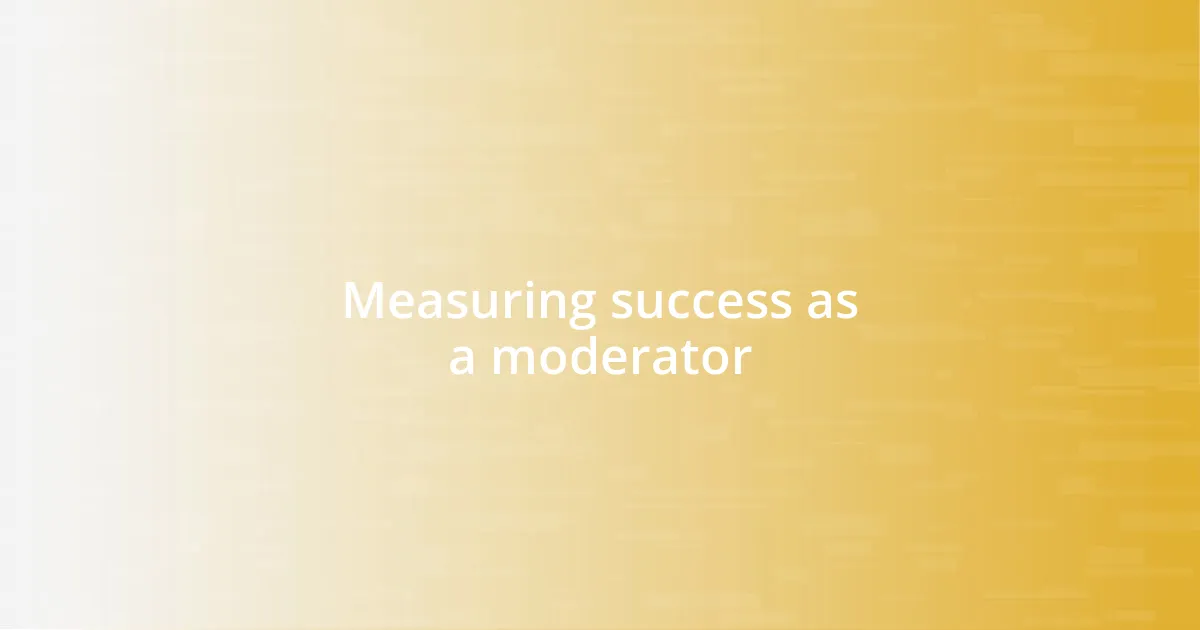
Measuring success as a moderator
Measuring success as a moderator can often feel like a blend of intuition and analytics. In my experience, one of the most significant indicators of success is the level of engagement. I recall when we launched a new discussion topic; the immediate uptick in comments and reactions was exhilarating. It made me realize that success isn’t just about the numbers but also about the quality of interactions. Have you ever noticed how vibrant exchanges reflect a thriving community?
Another key aspect is feedback from community members. I’ve taken the time to check in with them directly, asking questions about their experiences and how they feel about discussions. The insights I gained have been invaluable. There was a moment when a member expressed how my moderation made them feel more included, and that warm feedback reinforced the idea that moderation is deeply personal. Don’t you think it’s refreshing to know your efforts resonate on a human level?
Additionally, I track the resolution of conflicts and the overall tone of discussions. There was a time when a small disagreement escalated, but by employing a proactive approach, the situation was resolved swiftly. Witnessing members come together in mutual respect afterwards felt like a victory. How does it feel when you see a community united? For me, those moments are what define success in moderation—it’s about creating an environment where everyone feels valued and heard.










